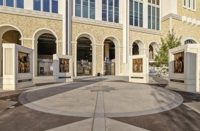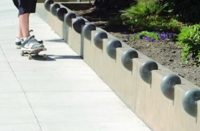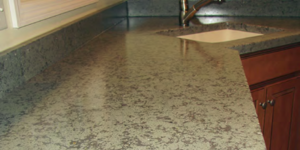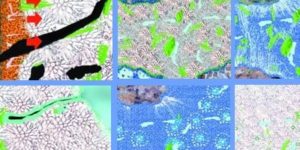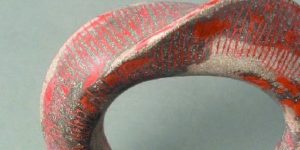ASTM has established a new standard for glass pozzolans, ASTM C1866/C1866M-20, that covers two chemistries of glass, soda lime and E glass.
Soda lime, which is used to make bottles and windows, is called Type GS. The other chemistry is E glass, made from glass fiber used for reinforcements, called Type GE. Their chemistry differs in Na2O alkali content. Bottles and windows have 13% Na2O, and E glass has less than 1%. The standard calls for the glass to be 99.5% pure, to be in powder form finer than 95% passing 325 mesh, and to pass strength activity index standards.
The bottle glass is recycled from urban recycling or bottle drop-off stations. The plate glass is from window manufacturers. Together, they are the feedstocks for type GS glass pozzolan. Type GE pozzolans are recycled from fiberglass factories. Figure 1 is a photo of these three feedstocks.
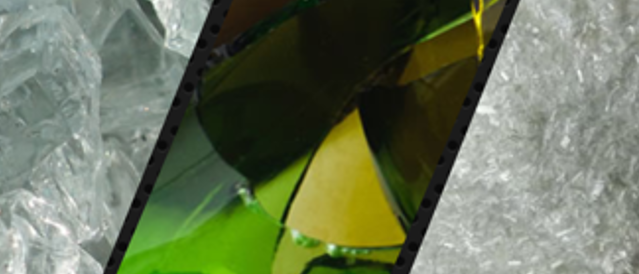
Photos courtesy of Vitro Minerals
What is a pozzolan?
A pozzolan is any amorphous, high silica powder that reacts with the lime produced when you add water to portland cement. The lime is the source of efflorescence, a chalky discoloration on concrete surfaces that streaks the natural color or obscures the vibrant color of the pigment used for decorative concrete.
This pozzolan reaction with lime converts the lime to calcium silicate hydrate (CSH), which is the strength-builder in concrete. When driven to completion over a period of up to 90 days, the concrete will be stronger, less porous and quite resistant to sulfate attack or road saltwater attack on rebar.
As the pozzolan powder gets finer, the reaction accelerates, and most of the benefits can be achieved by 28 days. Since glass chemistries are uniform around the world, the glass pozzolans react consistently to produce better concrete. Figure 2 is the chemical comparison of glass pozzolans with fly ash, slag cement and metakaolin.
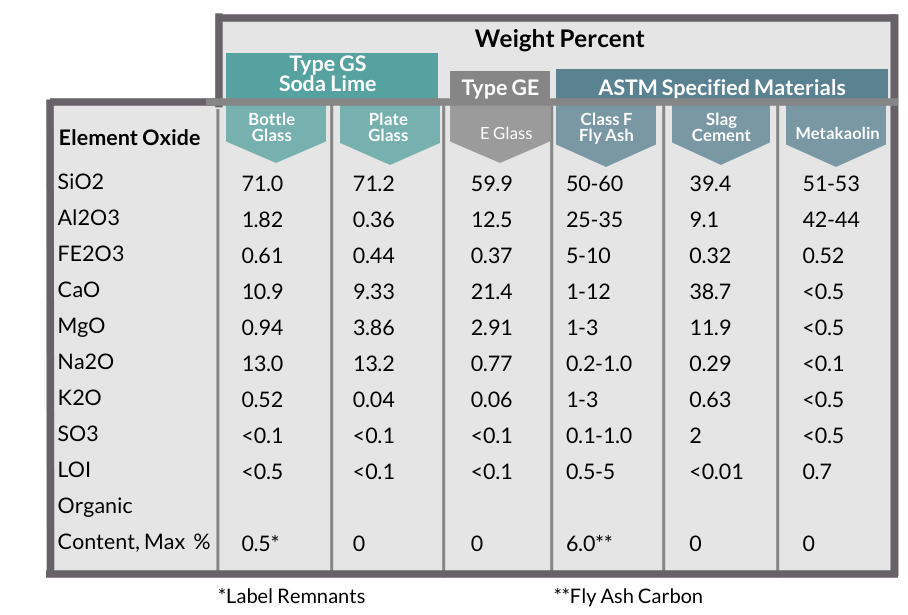
Above are the composition components of type GS/GE glass types alongside common supplementary cementing materials (SCMs) used in concrete.
Portland cement is a large contributor to greenhouse gas emissions. About 85% of cement feedstock is limestone. Limestone gives up 44% of its weight in the form of CO2 when going through the kiln. It’s also quite energy intensive to make cement powders.
In a concrete mix design, pozzolans can substitute 15% to 40% of the cement powder. Every ton of cement powder replaced by a pozzolan saves about one ton of CO2 emissions from being released into the atmosphere. In almost every application, pozzolans improve concrete’s durability, strength and efflorescence potential.
Increasing issues surround the availability of the most widely used pozzolans like fly ash and other effective materials like slag cement. Coal-fired power plants are being shut down and replaced by natural gas, and most slag cements are already being imported from overseas. Glass pozzolans can play an important role in alkali-silica reaction (ASR) mitigation. They also can help produce whiter colors for applications that typically use white cement or color pigments.
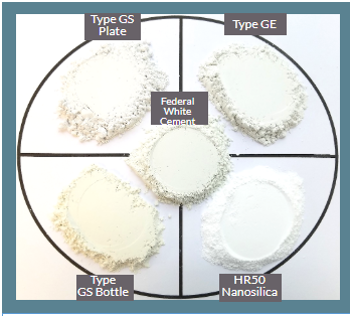
Figure 3 illustrates the whiteness of three of the glass pozzolan powders compared to white cement. Type GS made from plate glass and type GE are both whiter than white cement. Type GS made from containers is tan. Also shown in Figure 3 is a new white nanosilica. While not part of the new ASTM standard, it is the whitest, fastest reacting powdered glass pozzolan available.
Because of their extreme white characteristics, three of these pozzolans are excellent additives for architectural precast, GFRC, pool plaster and mixes with color pigments to enhance colorfastness.
Alkali-silica reaction
When alkali reacts with certain aggregates it causes ASR, an expansion phenomenon that forms an expansive gel that causes crack and durability issues. Since it takes exposure to water to keep the reaction going, ASR usually only occurs in weather-exposed environments.
Glass is a reactive aggregate when present in concrete at sizes larger than 50 mesh (300 microns). But when processed to powder meeting the ASTM C1866 standard, glass is no longer a reactive aggregate.
The new glass standard defers to ASTM C1778 regarding ASR issues. After extensive testing, it has been determined that type GE glass pozzolans are more effective than the best fly ashes in mitigating ASR. For instance, in some systems, type GE glass pozzolan mitigates Spratt Aggregate expansion with 10% cement replacement, and Placitas aggregate with 15% cement replacement.
While type GS pozzolans don’t cause ASR, they aren’t effective at mitigating ASR. They must be used where there aren’t any reactive aggregates, or in indoor environments, or in circumstances where other mitigation strategies are used, such as the addition of silica fume or metakaolin. Figure 4 demonstrates the relative efficacy of glass pozzolans and Class F fly ash in mitigating ASR expansion.
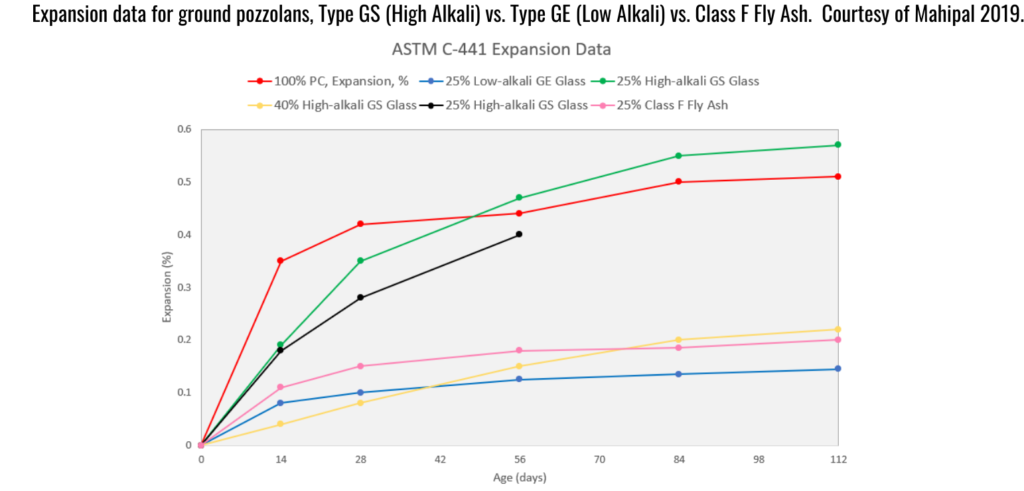
How to use glass pozzolans
Glass pozzolans are about 20% lighter than the cement powders they’ll replace. The standard cement replacement level is 20% to 25%. Normally, an equal weight of pozzolans replace about 20% of the cement. The glass pozzolan’s water demand will be quite close to that of the cement’s. The pozzolan is added at the same time as the cement.
There won’t be any issues with finishing, applying sealers or topical colorants, or texturing concrete that contains glass pozzolans. Since both Type GE and Type GS plate glass are whiter than white cement, the glass powders will work well in decorative concrete, architectural precast, GFRC, pool plaster and mixes with color pigments to enhance colorfastness.
Long-term effect of glass pozzolans
The concrete with glass pozzolans will be stronger and denser (less permeable). This means that water carrying salt and other deleterious chemicals can’t easily soak into the concrete. Mostly prevented from entering the concrete, the water limits lime efflorescence coming out of the concrete as the concrete dries in the sun.
Color pigmented concrete loses its sharp colors when efflorescence obscures the surface from getting rained on and then drying out. In all cases, pozzolans will make concrete stronger and more colorfast. They are an important contributor to reducing greenhouse gasses.
If you would like to view or download a report on the extensive test work done on glass pozzolans, go to www.vitrominerals.com.
